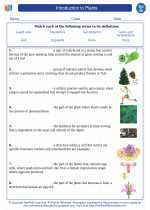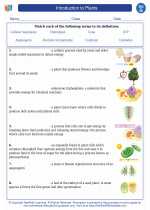Smuts in Biology
Smuts are a group of fungi that belong to the class Ustilaginomycetes. They are parasitic fungi that infect plants, causing various plant diseases. These fungi are characterized by their dark, powdery spores that are produced on the host plants. Smuts can infect a wide range of plant species, including grasses, cereals, and ornamental plants.
Life Cycle of Smuts
The life cycle of smuts typically involves two different spore stages: the teliospores and the basidiospores. Teliospores are the thick-walled, dark-colored spores that are produced in the smut sori (fungal structures) on the infected plants. These teliospores give rise to basidiospores, which are the infectious spores that are released and spread to other plants, initiating new infections.
Effects of Smuts on Plants
When plants are infected with smuts, they can experience a range of symptoms, including stunted growth, wilting, discoloration, and reduced yield. In agricultural settings, smut infections can lead to significant economic losses due to reduced crop productivity.
Control and Management of Smut Diseases
There are several strategies for controlling and managing smut diseases, including the use of resistant plant varieties, crop rotation, and the application of fungicides. Additionally, practices such as sanitation and removal of infected plant material can help reduce the spread of smut infections in agricultural settings.
Study Guide
Here are some key points to remember about smuts:
- Smuts are parasitic fungi that infect a variety of plant species.
- They produce dark, powdery spores on infected plants.
- The life cycle of smuts involves teliospores and basidiospores.
- Smut infections can cause stunted growth and reduced yield in plants.
- Control measures for smut diseases include resistant plant varieties and fungicide applications.
◂Biology Worksheets and Study Guides High School. Introduction to plants

 Worksheet/Answer key
Worksheet/Answer key
 Worksheet/Answer key
Worksheet/Answer key
 Vocabulary/Answer key
Vocabulary/Answer key
 Vocabulary/Answer key
Vocabulary/Answer key
 Vocabulary/Answer key
Vocabulary/Answer key
 Vocabulary/Answer key
Vocabulary/Answer key
 Vocabulary/Answer key
Vocabulary/Answer key
